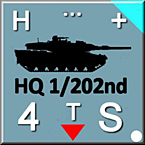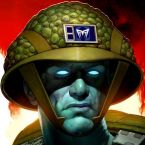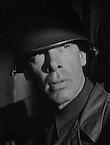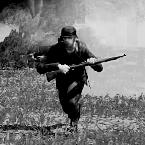Queeg
Posts: 495
Joined: 6/23/2005
Status: offline

|
Strategic Command strikes me as more strategy game than wargame. It never really caught my interest.
EAW, like WWI Gold/CE, aspires to be more of a strategy/wargame mix. I enjoy both games, but I personally still prefer WWI Gold/CE at the present.
WWIG was based on a board game, so it's not really similar to any other PC game. One of the things I most like about WWIG is that it's completely unique.
While EAW borrows some concepts and art from WWIG, it plays very differently. EAW is much more similar to AGEOD's other games; it basically plays like CW2 tweaked for the WWI era. It offers more deja vu than eureka. And while it mimics some of the strategy-game elements of WWIG, none is as deep as in WWIG - EAW is more strategy "lite" in that respect.
It's still early, of course, but I am enjoying EAW. It's easily the most polished game AGEOD has released, and I think they've done a decent job of tweaking the CW2 engine to model some of the nuances of WWI. Trench warfare needs work - it's handled largely by the "march to the sound of the guns" mechanic used in AGEOD's 19th Century games and it doesn't work especially well in this era. But the core AGEOD engine - with its deep combat model and voluminous post-battle data dump - generally works well.
There are things that I prefer in WWIG, however:
First, and foremost, I prefer the hands-on approach to combat in WWIG. There's just something about selecting and sending individual units "over the top" that just works for me. I never tire of it. The EAW model, like that in CW2, is highly detailed but mostly a spectator affair. The addition of battle plans certainly helps, but it's still a hands-off model. My guess is that if you really enjoy poring over the data after each battle, then there's plenty to love in the battle reports in EAW, but I'm not a big fan of having to look too deeply under the hood to figure out what happened. For me anyway, the WWIG battles just are more interesting.
Second, and related, the unit data in EAW is more obscure than in WWIG. Units in EAW have a macro "power" number that is both of central importance and completely indecipherable - it just is; accept it and move on. Unit data in WWIG is much more straightforward but no less complex - I can look at a rested 5.4.2 elite unit and immediately know just from the unit figures, background color and flag exactly how it will compare to another unit. I don't even have to stop and think about it. In that respect, I think WWIG is a model of concision and clarity.
Third, I really like the way reserves work in WWIG, especially once the war enters the trench warfare phase. Reserves are committed at the Army or even GHQ level, which means that battles play out more focused on fronts than individual provinces. And with breakthroughs and counter-attacks, you're forced to think and plan across multiple provinces in a single battle. And in trench warfare especially, combat tends to be brutal at the point of emphasis but without breaking the cohesion of the front. Combat in EAW, like CW2, is still fundamentally province-focused. Units with a general can MTSG, but the effect is still to aggregate power in a single province. If they win, fine. But if they lose, they all retreat, which can leave a huge multi-province hole in your front. And, at present anyway, there's no way to turn the MTSG feature on or off for a given unit - there's a work around involving Evade Combat orders but it's less than ideal. Overall, the reserve model in WWIG, for my tastes anyway, does a better job of simulating WWI combat in the trenches.
Fourth, the Diplomacy game in WWIG is much more interesting. You have far more diplomatic options in WWIG and can achieve some ahistorical, yet plausible, results (which some may not like). EAW is more limiting. I was surprised, for example, to discover that diplomacy is impossible in the July 1914 turn of the Grand Campaign - I would have thought that's exactly what you should be doing that turn. Because there's no early diplomacy option, things seem to be largely deterministic, at least early on - for example, Great Britain will join the Entente or not based on factors completely beyond your control. Worse, if you play as Russia, you can't do diplomacy at all - only the Western Entente gets to use any of the diplomacy features built into the game ( the rationale being that Russia was the weaker diplomatic partner). You also get the Gold to Turkey/Ships to Turkey events, but apparently not as choices, but as a predetermined result. There is no Diplomatic Poker option for Germany as in WWIG. Again, all this is pretty consistent with CW2 - events are there but not as robust as they could be - which reflects the fact that the core AGEOD game engine has been tweaked, not overhauled, to portray WWI. Which makes EAW fun, but not especially fresh, at least for my tastes.
I need to spend more time with EAW, and I'm sure they'll improve it over time - though whether they will really change the game in any major way seems unlikely. But there still are many reasons to play WWIG (and WWICE if you're lucky enough to have it) - EAW will compliment the earlier game but doesn't really try to replace it.
|
 Printable Version
Printable Version


















 New Messages
New Messages No New Messages
No New Messages Hot Topic w/ New Messages
Hot Topic w/ New Messages Hot Topic w/o New Messages
Hot Topic w/o New Messages Locked w/ New Messages
Locked w/ New Messages Locked w/o New Messages
Locked w/o New Messages Post New Thread
Post New Thread